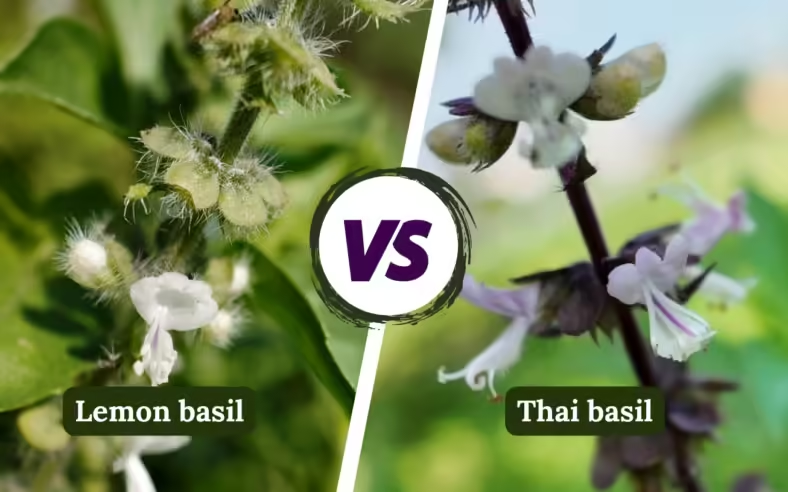
Lemon Basil vs Thai Basil: What’s the Real Difference?
Ever reached for a bunch of basil and wondered, “Wait, is this Thai basil or lemon basil?” You’re not alone! These two herbs may come from the same family, but their flavors and aromas are surprisingly distinct. In this quick guide to Lemon basil vs Thai basil, we’ll break down what sets them apart and how each one is used in Vietnamese cooking.
Quick comparison table
What is lemon basil?
What is Thai basil?
Shared traits
Key differences
Culinary uses
FAQs
Quick comparison table (for easy skimming)
Botanical Name
Flavor
Aroma
Stem Color
Leaf Color
Flower Color
Vietnamese Culinary Uses
Harvest Time
Growth Needs

Lemon Basil
Ocimum × africanum
Light, citrusy, mildly sweet, with a hint of tanginess
Fresh and lemony—like lemongrass and lemon zest
Light green
Green
White
Chicken hotpot, steamed seafood, herb platters, lemon basil seed drinks
Around 30 days after planting
Full sun (around 6 hours/day), loose, fertile, and well-draining soil

Thai Basil
Ocimum basilicum var. thyrsiflora
Sweet, slightly spicy, with hints of anise and licorice
Bold, sweet, and anise-like
Deep purple
Slightly darker green
White with a soft purple hue
Pho (Vietnamese noodle soup), stir-fries, curries, fresh herb platters
Around 35–40 days after planting
Same as lemon basil
What is Lemon basil?
Lemon basil (Ocimum × africanum), also known as hoary basil, Thai lemon basil, or “e” in Vietnamese, is a fragrant herb with a fresh, citrusy aroma reminiscent of lemongrass and lemon zest. Native to tropical Asia and northeastern Africa, this hybrid of sweet basil and American basil is loved for its light, soothing flavor and lemony scent.
In Vietnam, lemon basil is often mixed with other aromatic herbs in fresh herb platters (rau song), served alongside chicken hotpot, or steamed with seafood like shrimp or clams to add a refreshing, citrusy aroma.
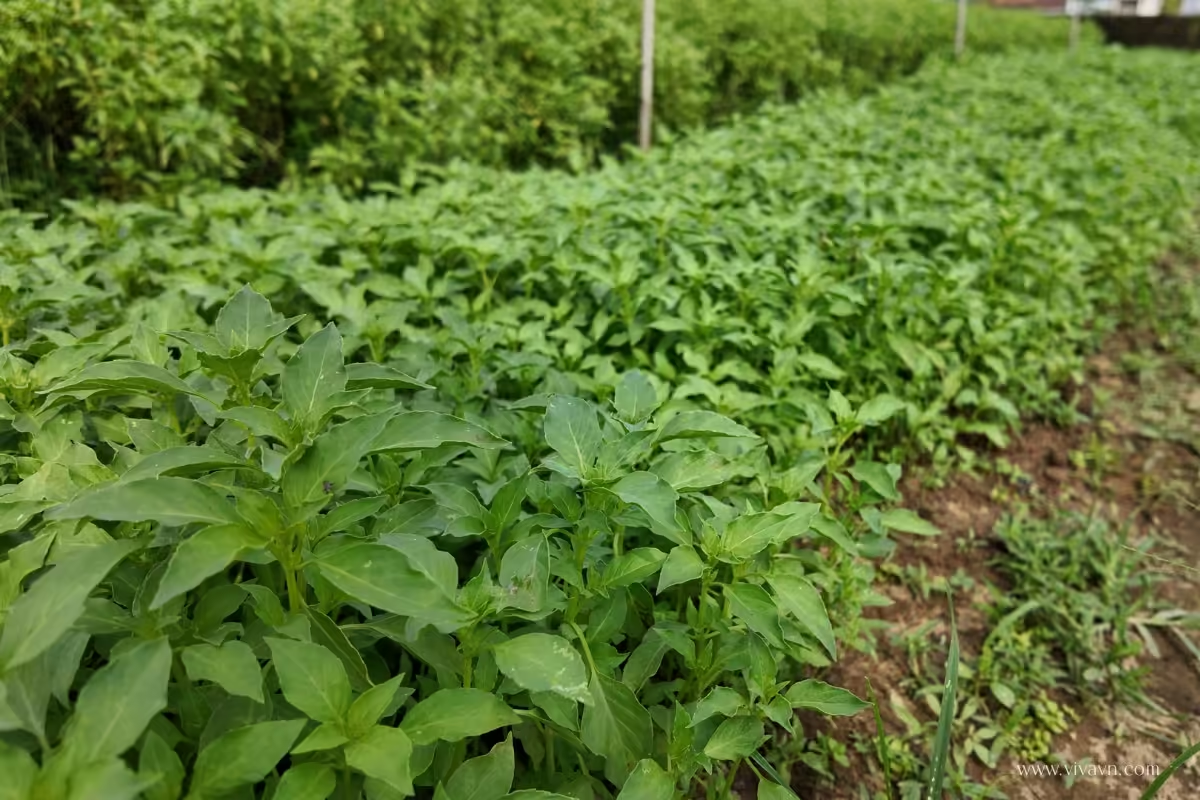
Close-up of lemon basil (Ocimum × africanum) plants growing in rows in Vietnam
For a closer look at how lemon basil is grown and appreciated in Vietnam, you can read our full article here.
What is Thai basil?
Thai basil (Ocimum basilicum var. thyrsiflora), also known as “hung que” in Vietnamese, is a fragrant herb native to Southeast Asia and a member of the mint family. It has a bold, anise-like aroma with subtle hints of licorice. Thai basil is commonly featured in dishes such as pho (Vietnam’s iconic noodle soup), fresh herb platters (rau song), and various stir-fried dishes.
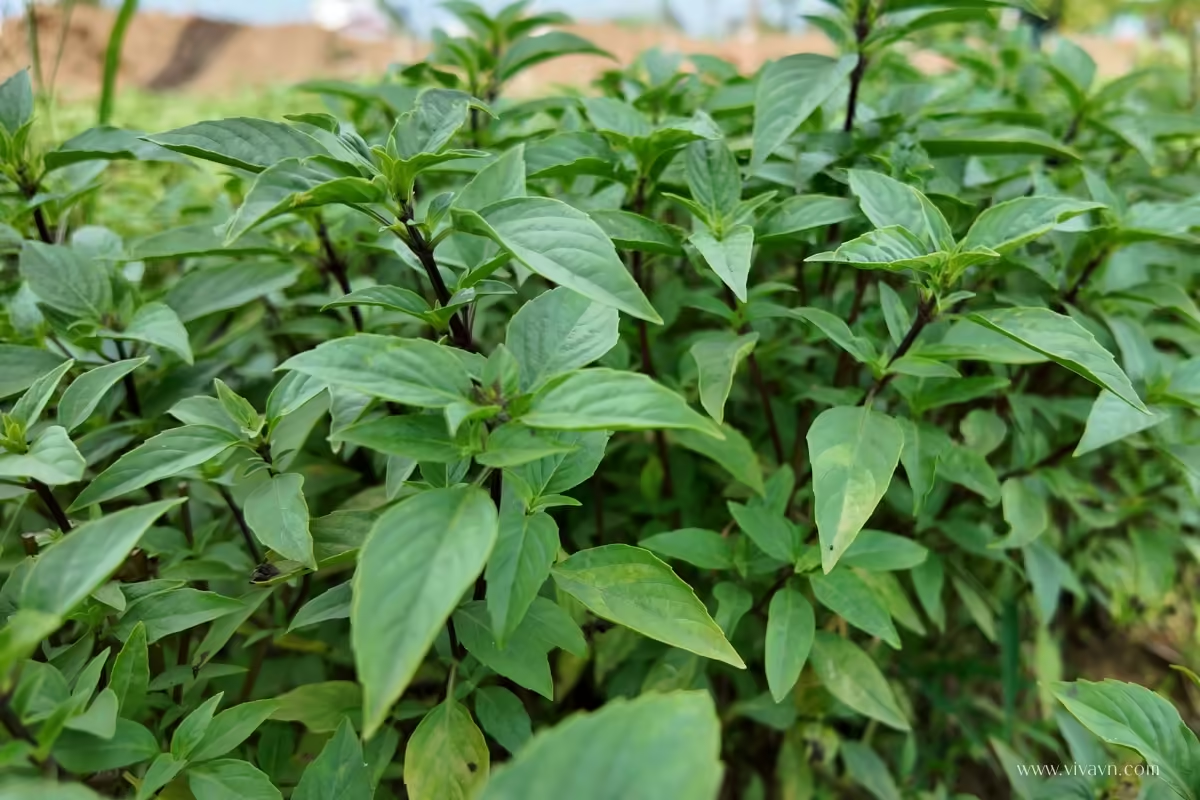
Close-up of Thai basil (Ocimum basilicum var. thyrsiflora) plants in a Vietnamese garden
If you’d like to explore Thai basil in more detail—from its aroma to how it’s cultivated—you can find the full write-up here.
What Lemon basil and Thai basil have in common
While lemon basil and Thai basil have differences in flavor and appearance, they do share several important traits. Both belong to the mint family (Lamiaceae), thrive in loose, well-draining soil, and love full sun—ideally around six hours per day. With proper care, both can be harvested within 30 to 40 days of planting, making them fast-growing herbs commonly found in Vietnamese home gardens.
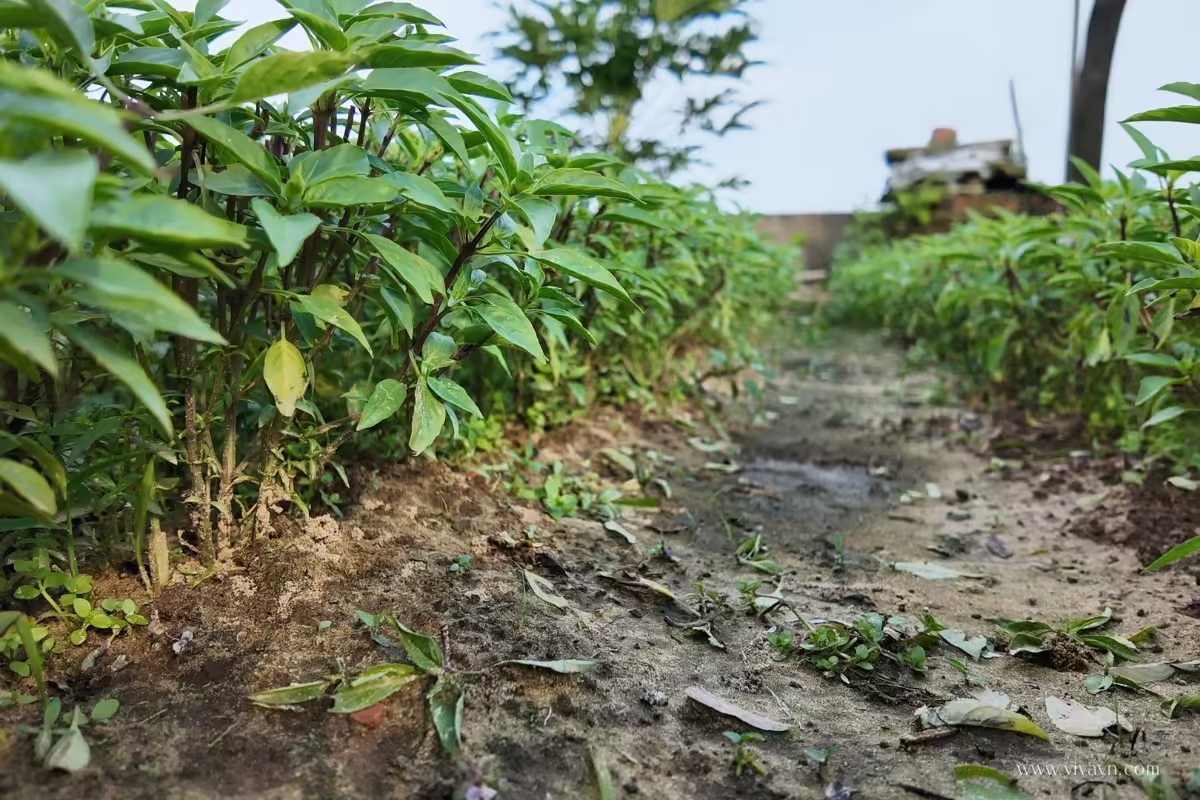
In this image, you can see the kind of loose, well-drained soil that helps lemon basil and Thai basil grow strong and healthy.
Key differences between Lemon basil and Thai basil
Differences in flowers, stems, and leaves
How their flowers look different
Both lemon basil and Thai basil produce flowers along long, slender spikes that grow from the top of the plant. The overall structure is similar, but lemon basil blooms are typically pure white, giving them a clean, delicate look. In contrast, Thai basil flowers are white with a soft purple hue at the base of each petal.
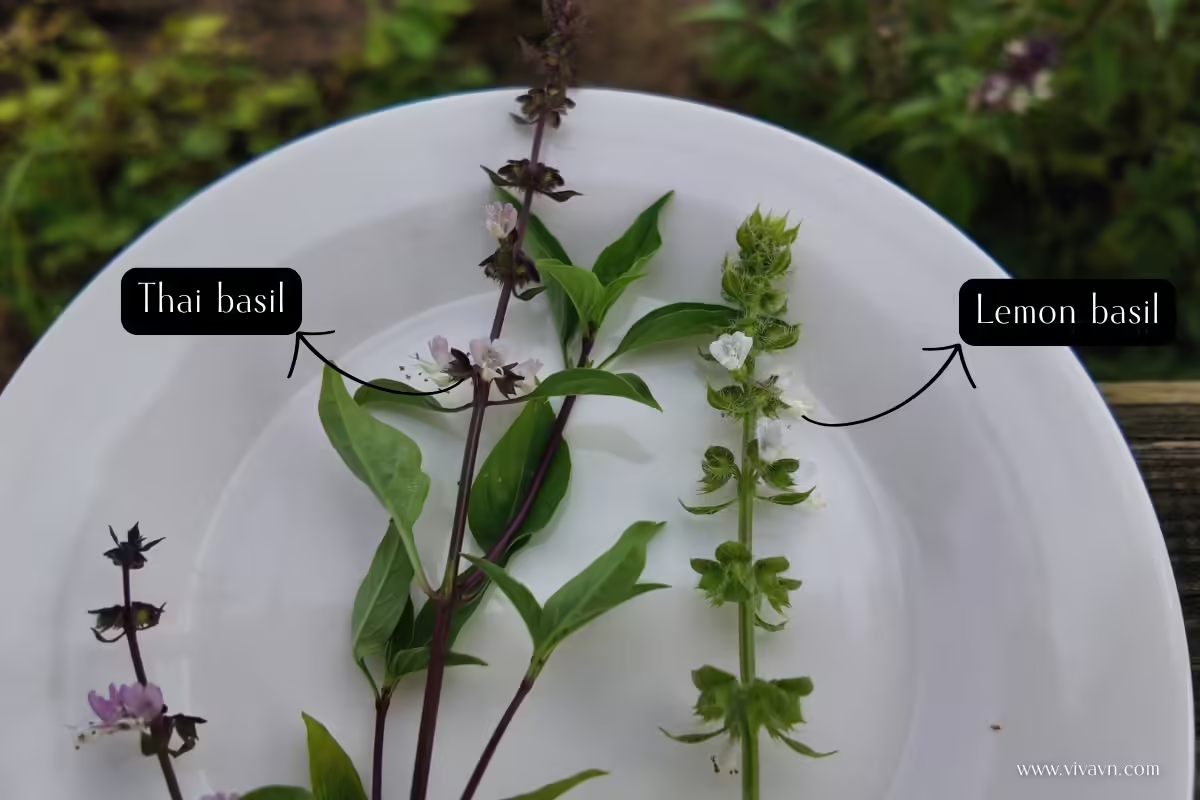
In this image, lemon basil has white flowers, while Thai basil has a soft touch of purple.
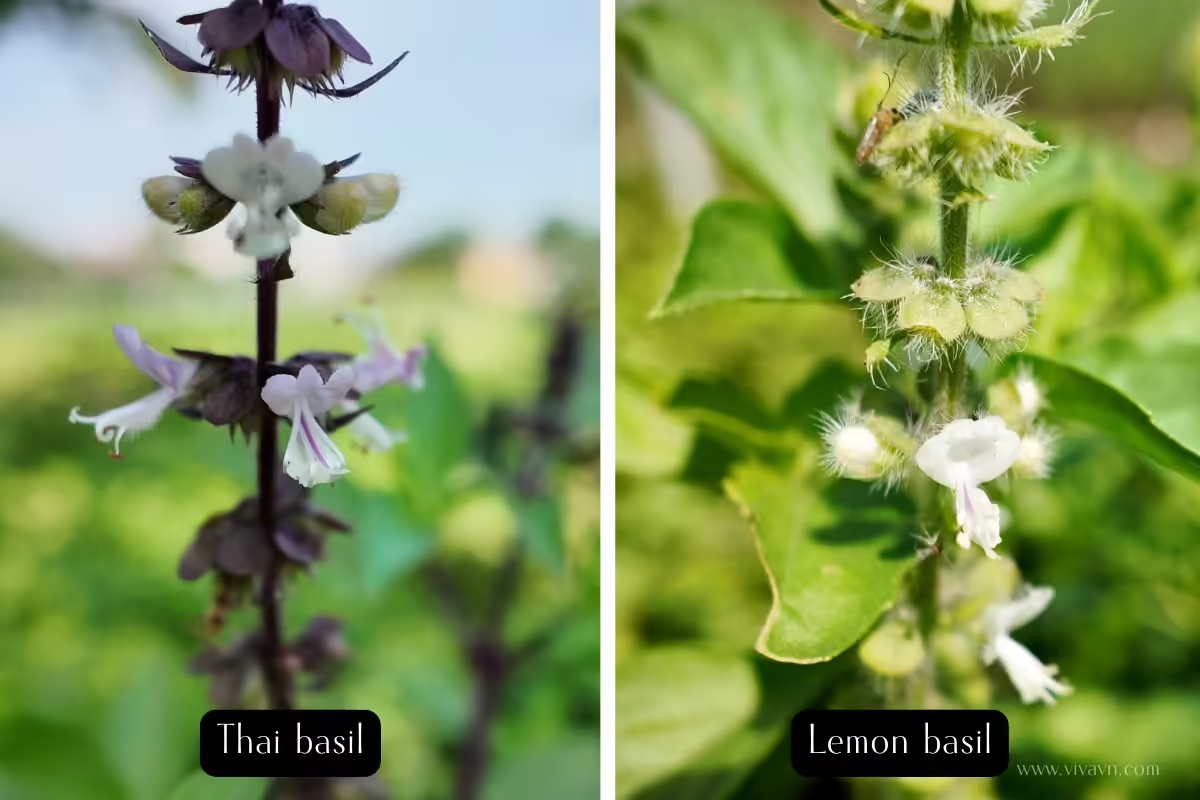
Macro image of lemon basil and Thai basil flowers—white vs. purple-tinged.
Noticing the difference in stems
Lemon basil features soft, pale green stems, while Thai basil stands out with its bold, deep purple stems. Both are tender enough to eat when young.
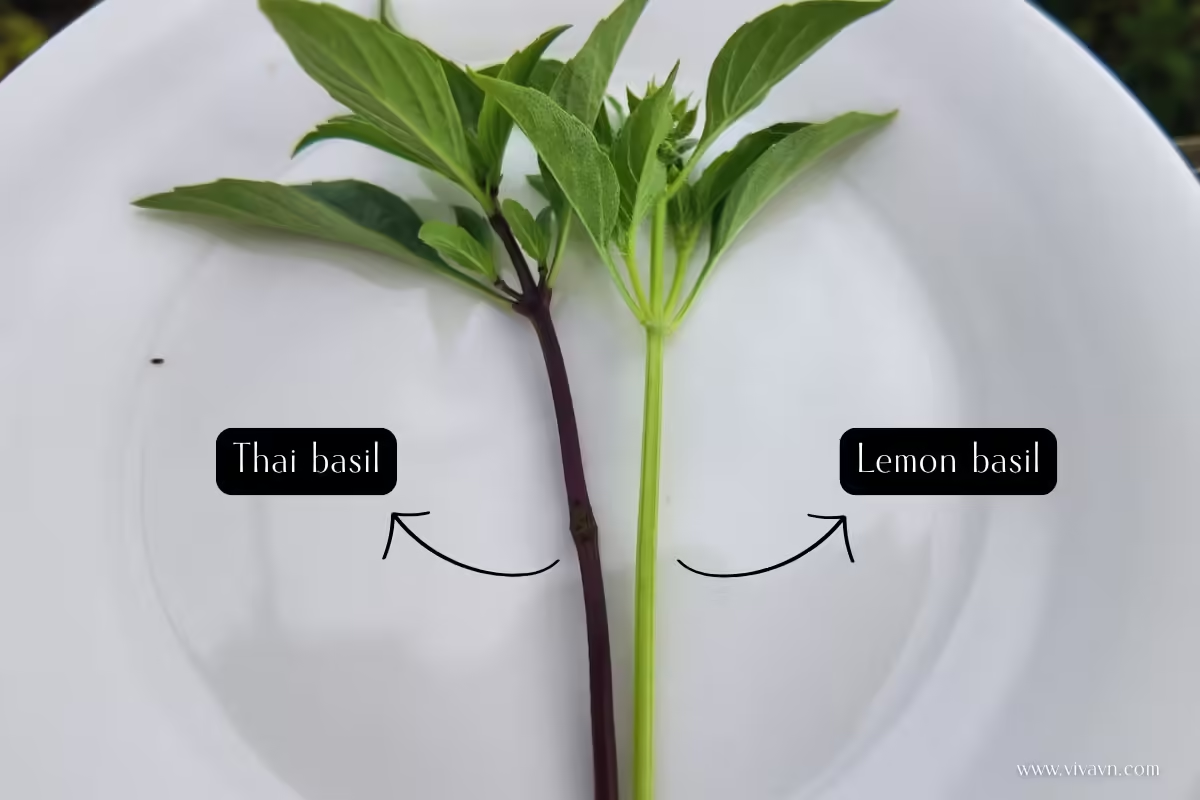
Side-by-side comparison of lemon basil and Thai basil stems showing color and structure differences
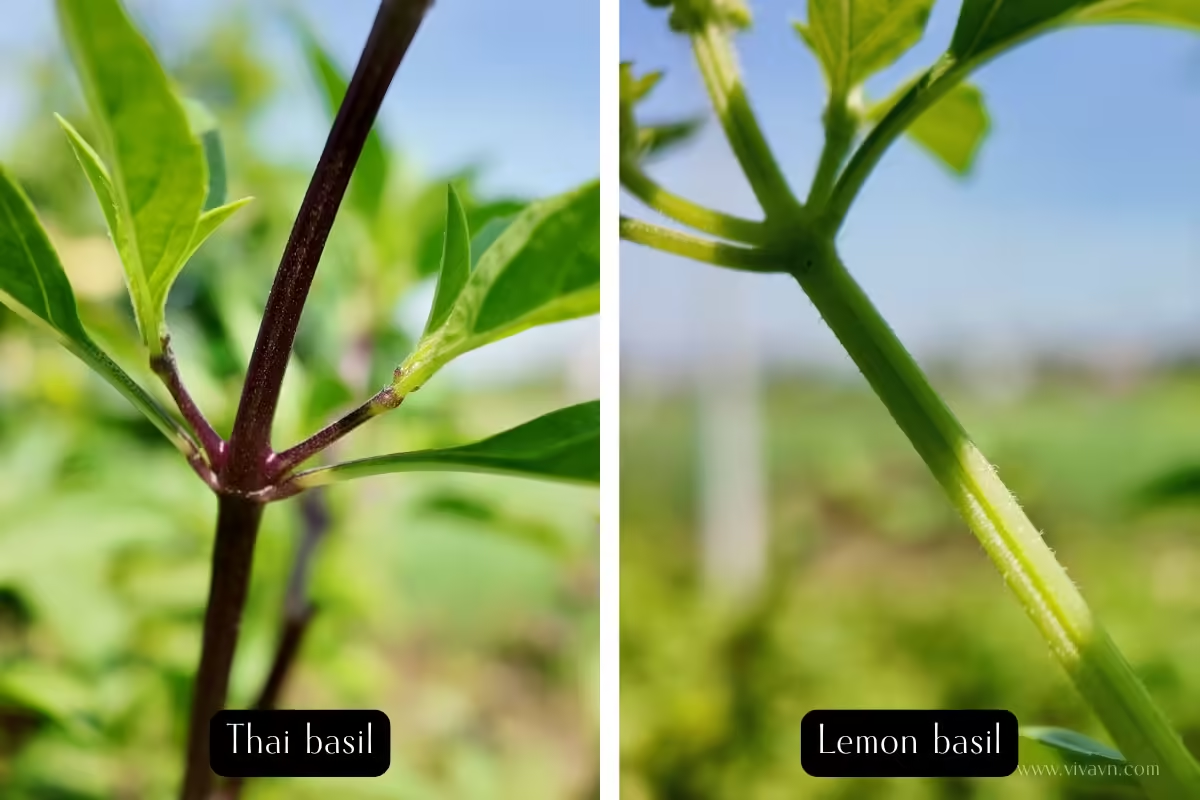
Image showing macro contrast between lemon and Thai basil stems.
Spotting the leaf differences
Both lemon basil and Thai basil have oval-shaped leaves with gently serrated edges, giving them a similar overall appearance. However, there’s a slight difference in color—Thai basil leaves are just a bit darker green than those of lemon basil.
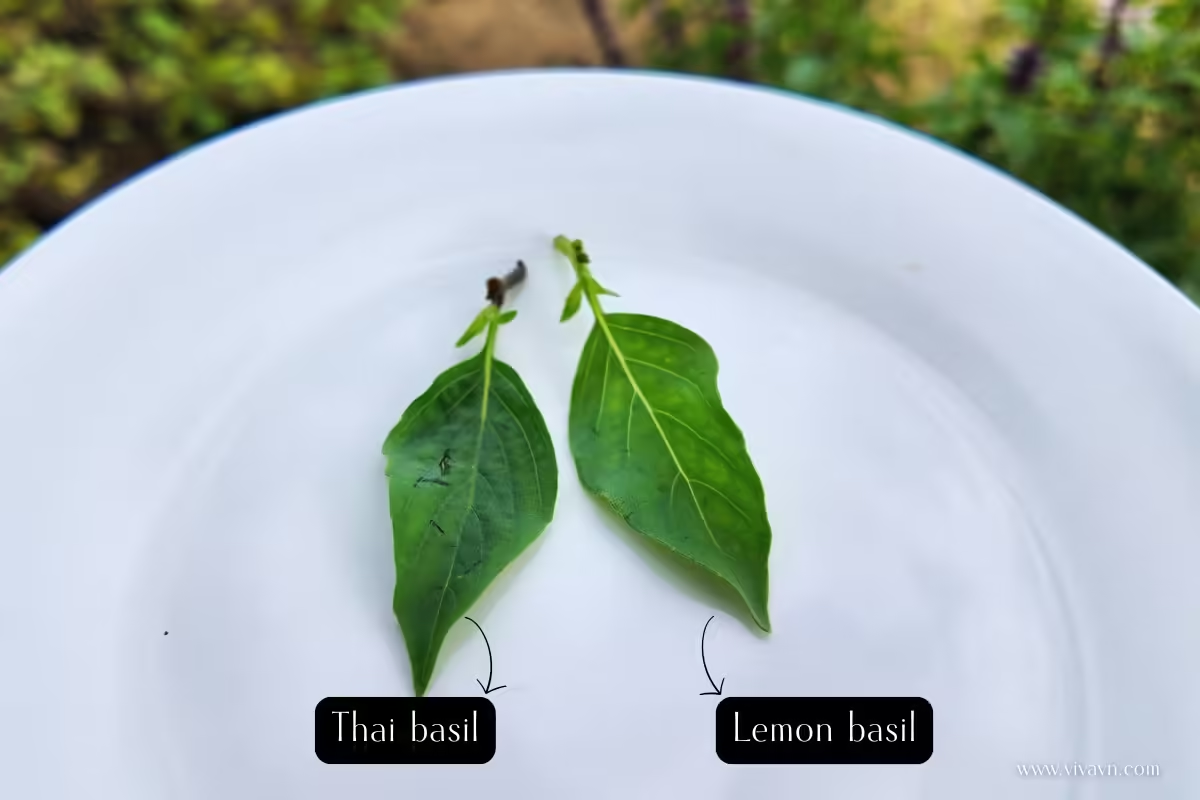
Image highlighting the subtle color difference between Thai and lemon basil leaves.
Flavor and aroma comparison
Lemon basil has a light, citrusy aroma that’s refreshing and soothing, often compared to fresh lemongrass or lemon zest. Its flavor is mild, with a delicate sweetness and a hint of tangy sourness, followed by a cool, minty warmth and subtle peppery notes that linger gently on the tongue.
In contrast, Thai basil offers a bolder, more complex aroma, defined by its sweet, anise-like scent with hints of licorice. The flavor is stronger and slightly spicy, with a warm depth that lingers on the palate.
Ways Lemon basil and Thai basil are used in Vietnamese dishes
Both lemon basil and Thai basil are often enjoyed as part of a fresh herb platter, known in Vietnam as rau song. This platter often includes a mix of aromatic herbs like fish mint, lettuce, perilla, and various types of basil. It’s typically served alongside rich dishes, like meats, fried foods, or grilled items, to add freshness, balance the flavors, and cut through the heaviness.
Besides being part of herb platters, both are also used in different Vietnamese dishes to bring out their natural aroma.
Lemon basil in Vietnamese cuisine
Lemon basil is often added to chicken hotpot or used to steam chicken. In some coastal areas, it’s also used to steam shrimp or clams, adding a fresh, herbal fragrance to the seafood.
Its seeds are also popular in Vietnam for making a refreshing drink—soaked in a sweet ginger syrup, the seeds develop a soft, jelly-like coating that’s perfect for cooling off on hot days.
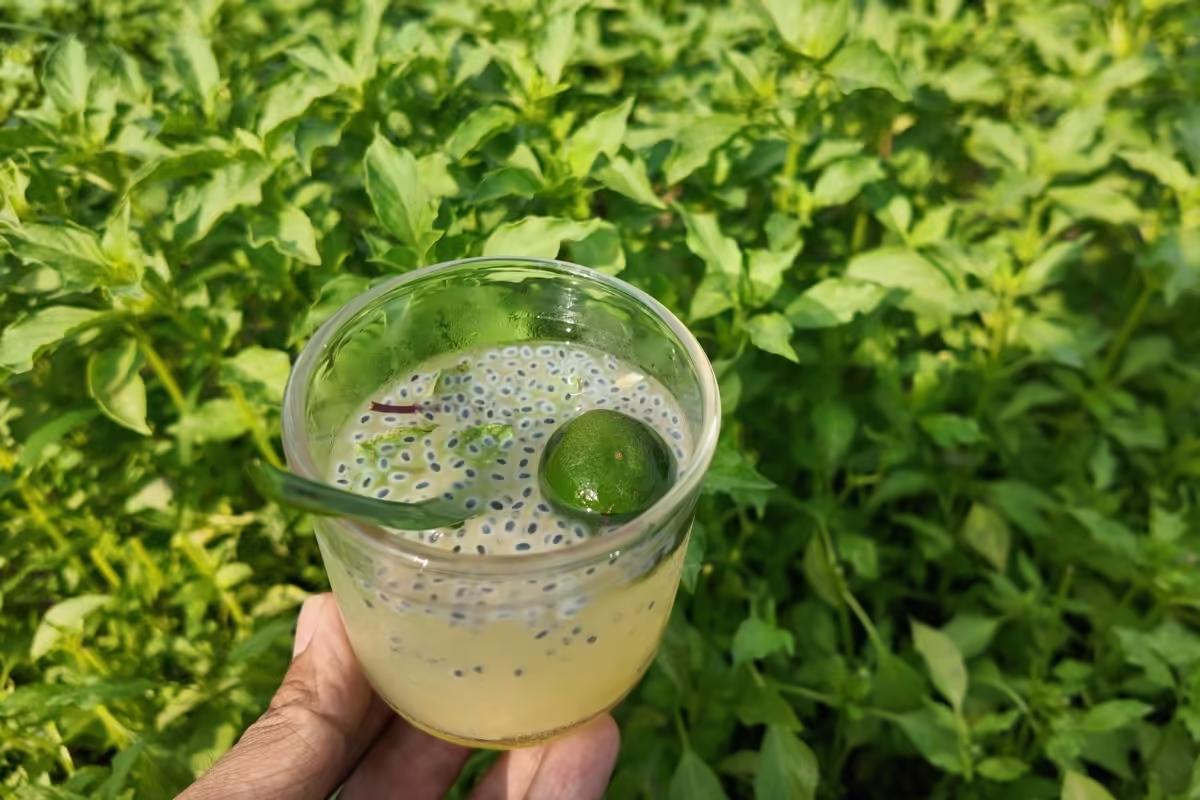
This image shows a light and cooling Vietnamese drink made with lemon basil seeds in ginger syrup.
Thai basil in Vietnamese cuisine
Thai basil is perhaps best known as the go-to herb served with Vietnamese pho. If you’ve ever eaten pho in Vietnam, you’ve likely seen a plate of Thai basil on the side, ready to be added to your bowl of pho. It’s also used as a garnish or added near the end of cooking in stir-fries and curries to bring out its sweet, spicy, anise-like flavor.
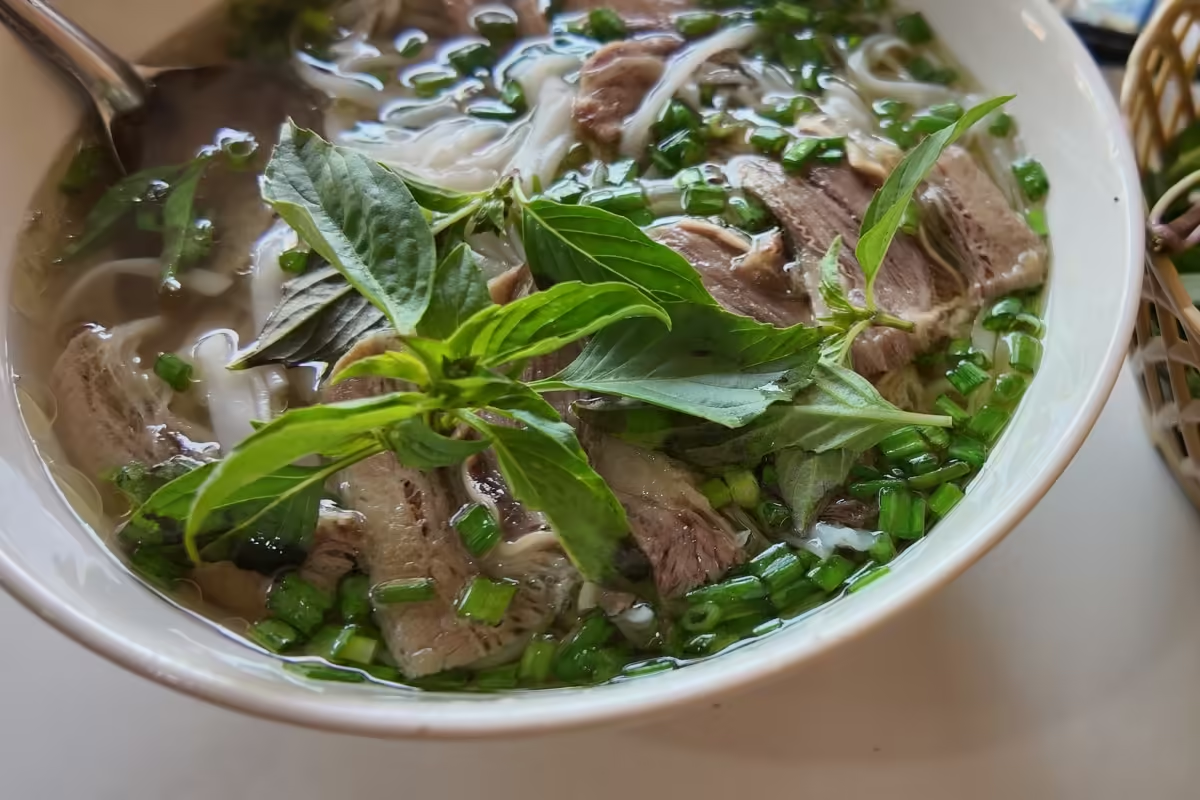
This image shows a steaming bowl of pho garnished with Thai basil.
FAQs about lemon basil and Thai basil
Is lemon basil the same as Thai basil?
No, they’re different herbs. While both are members of the mint family, lemon basil has a light, citrusy aroma with subtle tangy notes, whereas Thai basil offers a bolder, spicy-sweet flavor with hints of licorice.
How can I distinguish between lemon basil and Thai basil plants?
Lemon basil typically has light green stems and leaves, while Thai basil features deep purple stems and darker green leaves. Their flowers also differ: lemon basil has pure white blooms, whereas Thai basil’s flowers are white with a soft purple tint at the base.
What are the ideal growing conditions for both lemon basil and Thai basil?
Both thrive in warm climates with full sun exposure and fertile, well-draining soil. They prefer temperatures between 24°C to 30°C and require regular watering without waterlogging the soil.
How long does it take to harvest lemon basil and Thai basil after planting?
Lemon basil can be harvested around 30 days after planting, while Thai basil is ready for harvest between 35 to 40 days.
Can I use lemon basil seeds in beverages?
Yes. Lemon basil seeds can be soaked in sweet ginger syrup to create a soft, jelly-like texture. They’re often used in refreshing drinks, similar to how chia seeds are used.
Share on FacebookShare on X (Twitter)Share on PinterestShare on WhatsappShare on LinkedinShare on TelegramShare on Email
- https://www.youtube.com/@VivaVNOfficial
- https://www.facebook.com/vivavnofficial2024
- https://www.pinterest.com/vivavnofficial/
© 2025 VivaVN. All rights reserved.


Leave a Reply